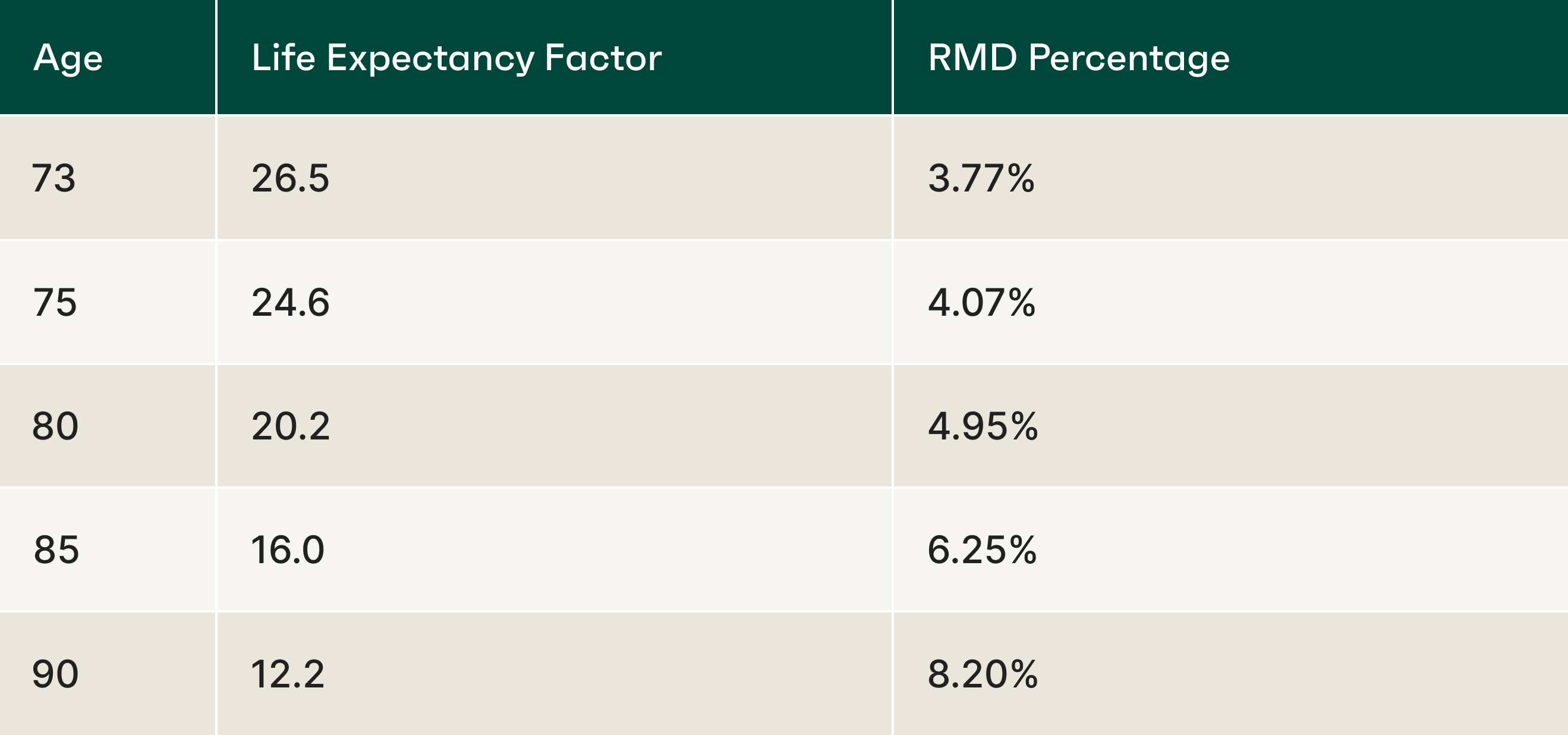Required Minimum Distributions (RMDs) represent a critical aspect of retirement planning that applies to cryptocurrency IRAs just as they do to traditional retirement accounts.
Understanding how RMD rules affect crypto holdings is essential for investors approaching retirement age with digital assets in their portfolios.
This blog covers how RMDs work in the context of a crypto IRA, who they apply to, and what to plan for in 2025.
What are required minimum distributions (RMDs)?
Required minimum distributions are mandatory withdrawals the IRS requires from Traditional IRAs and other non-Roth retirement accounts once an investor reaches a certain age. The purpose is to ensure tax-deferred assets eventually become taxable.
Key facts about RMDs in 2025:
- RMD age: 73 (for those turning 73 in 2025)
- Applies to: Traditional IRAs, SEP IRAs, and SIMPLE IRAs
- Exempt accounts: Roth IRAs are not subject to RMDs during the account holder’s lifetime
- RMD deadline: April 1 of the year following the year the investor turns 73. Each subsequent RMD must be taken by December 31 annually.
Note: Failing to take the full RMD may result in a 25% IRS penalty on the amount not withdrawn (can be reduced to 10% if corrected timely).
Understanding how these rules interact with crypto assets is critical for self-directed IRA holders.
How do RMDs apply to a crypto IRA?
Crypto IRAs follow the same distribution rules as other Traditional IRAs. That means if the account is funded with pre-tax contributions or rollovers, RMDs must be taken starting at age 73.
Important considerations for crypto IRAs:
- RMDs are based on the total account value as of December 31 of the previous year
- Valuation must include all crypto holdings, even if not sold
- Distributions must be made in USD, even if the account is primarily held in cryptocurrency
Note: Most crypto IRA custodians do not support in-kind crypto distributions. This means crypto assets must be sold and withdrawn as cash to satisfy RMDs.
The next step is understanding how to calculate these minimum withdrawals.
How RMDs are calculated for crypto IRAs
RMD calculations follow the same methodology for crypto IRAs as traditional retirement accounts, based on account value and life expectancy factors:
Basic RMD calculation: RMD Amount = Account Balance (December 31 of previous year) ÷ Life Expectancy Factor
Life expectancy factors from IRS tables:
- Uniform Lifetime Table (most common)
- Joint Life and Last Survivor Expectancy Table (for spouse beneficiaries more than 10 years younger)
- Single Life Expectancy Table (for certain inherited IRAs)
The December 31 account valuation represents a critical component for crypto IRAs, as cryptocurrency values can fluctuate significantly throughout the year.
Note: IRS Publication 590-B provides detailed life expectancy tables and calculation examples for RMD determination.

Cryptocurrency valuation presents unique challenges for accurate RMD calculations.
How to take RMDs from a crypto IRA in practice
Most self-directed crypto IRAs do not allow direct crypto withdrawals to meet RMDs. Instead, assets must be liquidated into USD and distributed.
Steps to take an RMD from a crypto IRA:
- Request a valuation report from the IRA custodian as of December 31
- Sell crypto assets equivalent to the RMD amount
- Withdraw the USD value from the IRA to a personal bank account
Important points:
- The sale of crypto inside the IRA is not a taxable event
- Only the distributed USD amount is treated as taxable income
- Multiple smaller distributions can be taken throughout the year, as long as the total meets the RMD
Note: Investors should begin planning RMDs early in the year to avoid last-minute trading or forced selling.
Some may choose to convert to a Roth IRA before reaching RMD age to avoid these withdrawals altogether.
When are RMDs not required in a crypto IRA?
RMDs do not apply to all types of crypto IRA accounts. There are exceptions that investors can use strategically.
RMDs are not required if:
- The account is a Roth IRA
- The account holder is under age 73
- The investor has completed a full Roth conversion before RMD age
Note: Converting to a Roth IRA triggers income tax in the year of conversion but avoids future RMDs.
Understanding these exceptions can help long-term investors better align their withdrawal strategy with retirement goals.
Common RMD mistakes to avoid
Several common errors can create substantial problems for crypto IRA holders subject to RMD requirements:
- Missing the first RMD deadline: Failing to take the initial RMD by April 1 triggers penalties
- Incorrect valuation methods: Using inappropriate or inconsistent cryptocurrency valuations
- Aggregation errors: Incorrectly calculating RMDs across multiple accounts
- Inadequate record-keeping: Poor documentation for valuation and distribution decisions
- Beneficiary designation oversight: Outdated or incorrect beneficiary information affecting inherited account rules
Penalty implications:
- 25% penalty on missed RMD amounts (10% if corrected within two years)
- Ordinary income tax on all distributed amounts
- Potential state tax penalties and interest
- Cumulative impact over multiple years if not addressed
Prevention through proper planning and professional assistance typically proves more cost-effective than penalty resolution.
Note: The IRS may waive penalties in certain circumstances, but relief requires demonstrating reasonable cause and corrective action.
What Alto CryptoIRA® users need to know
Required Minimum Distributions from crypto IRAs follow the same fundamental rules as traditional retirement accounts, with additional considerations for cryptocurrency valuation and distribution methods. Beginning at age 73, crypto IRA holders must calculate and take annual distributions based on account values and IRS life expectancy tables.
Alto CryptoIRA® provides comprehensive support for RMD compliance through automated calculations, flexible distribution options, and proper tax documentation. For crypto IRA holders approaching or subject to RMD requirements, understanding these rules and working with knowledgeable providers ensures compliance while optimizing tax outcomes.
Disclaimer: This information is educational only and not tax advice. Investors should consult qualified tax professionals regarding their specific RMD situations and planning strategies.





